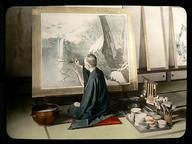Quiz Answer Key and Fun Facts
1. Maki and Nigiri are two types of what wonderful culinary treat of Japan, the creation of which has become a delicate, if not fleeting, artform?
2. What is the name of the ancient Indian language used to write the sacred scriptures of the Hindu religion?
3. In Japan, the beautiful sliding doors with paper screens contained within a wooden lattice are called by what name?
4. In southeast Asia, this is a shrine or tomb mound erected in honor of Buddha, whose relics are placed therein. What is this sacred architectural construct called?
5. The 'sim' is the main shrine of a temple complex reserved for monks only in what country of southeast Asia?
6. This is the term for the earliest doctrinal writings of Buddhist and/or Jainist scripture. Which term fits this description?
7. 'Sancai' is a Chinese term referring to the tri-colored glaze of yellow, green and brown developed for sculpture during which dynasty of Chinese history?
8. What is the name of the three-stringed lute-like instrument played by courtesans and geishas in traditional Japan?
9. The 'Seven Wise Men' of ancient Chinese history are frequently depicted in paintings, poetry and other art forms. In what sort of place did these wise men typically meet?
10. What is the name of the 'destroyer' god of Hindu myth, very frequently depicted in Hindu painting and sculpture?
Source: Author
thejazzkickazz
This quiz was reviewed by our editing team before going online.
Any errors found in FunTrivia content are routinely corrected through our feedback system.
